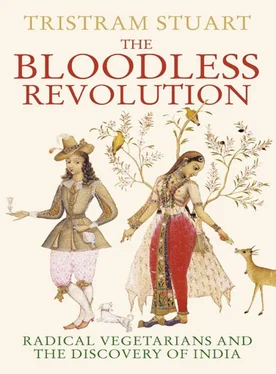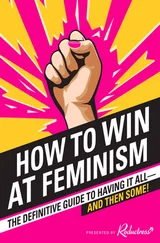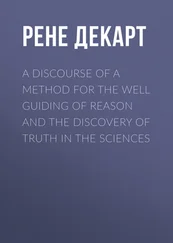Wallis agreed that the human caecum was small and shrivelled but this was not necessarily natural, since the human foetus had a much larger, healthy caecum. Overall, the human intestines, Wallis and Tyson agreed, fell in line with the herbivores. So did those of the monkeys, baboons, apes and, as Tyson had shown, the Homo sylvestris whose guts were proportionally exactly the same dimensions as man’s. 23 On the basis of the evidence, Tyson grudgingly – but decisively – agreed with Gassendi, ‘that Nature never designed [Man] to live on Flesh; but, that the Wantonness of his Appetite, and a depraved Custom, has inured him to it.’ This was exactly the claim of the radical vegetarians. If Thomas Tryon had been in the habit of reading scientific papers he might have been enthralled to find his religious and moral theories so clearly backed up by the latest scientific research. But Tyson and Wallis were not ready to part with their ‘depraved’ meat dinners. Despite their recognition of the very strong evidence, they refused to endorse a return to the natural diet. ‘I am not fond of advancing a New Hypothesis, contrary to the common sense of mankind,’ said Wallis. ‘And I should not have ventured so far, if Gassendus had not first broken the ice.’ 24 Wallis couldn’t face relinquishing meat, and instead he claimed that because meat-eating was universally practised it must be natural after all. Rather than accept the unpalatable conclusion that God intended he should be herbivorous, Tyson scuppered the entire basis of comparative anatomy and pointed out exceptions to the rule, such as the hedgehog and the opossum, the latter of which he had recently shown to have the gut of a herbivore but was carnivorous. 25
Paradoxically, the papers published by Wallis and Tyson presented evidence in favour of the herbivorous nature of man, but argued for the opposite. It was therefore used by both vegetarians and anti-vegetarians to support both sides of the debate for decades to come. John Evelyn read and marked up his copy of these papers, finding it most surprising, for example, that both Wallis and Tyson made the blunder of asserting that there were no vegetarian people on earth. 26 The eighteenth-century medical lecturers Boerhaave and Haller cited the articles to support their view that man was naturally omnivorous; 27 John Arbuthnot claimed that they proved man was ‘a carnivorous Animal’; 28 while the Italian vegetarian Antonio Cocchi, on the other hand, used the evidence to argue that the human gut showed we were supposed to be herbivores. 29
When naturalists started to divide all creatures on earth into a taxonomical system, Gassendi’s anatomical arguments remained profoundly influential. 30 In his seminal Historia Plantarum (1686–1704), the eminent botanist John Ray (1627–1705) asserted conclusively that ‘Certainly man by nature was never made to be a carnivorous animal, nor is he armed at all for prey and rapine, with jagged and pointed teeth and crooked claws sharpened to render and tear, but with gentle hands to gather fruit and vegetables, and with teeth to chew and eat them.’ The scientific evidence had obvious moral implications and he exclaimed against the unnatural consumption of ‘the reeking flesh of butchered and slaughtered animals’. 31
Ray’s taxonomical research provided the foundations for the definitive work of Carl Linnaeus, whose ‘binomial system’ of classification is still in use today. In the first edition of the Systema naturae (1735), Linnaeus placed humans and apes in the same order, Anthropomorpha (Ray’s term which Linnaeus later changed to ‘Primates’), partly on the basis that man shared the four (distinctly herbivorous) incisors of apes, monkeys and sloths. 32 Even this shocking decision – which still cordoned humans off into a genus ( Homo ) and even a whole family of their own – was nothing like as radical as what Linnaeus privately entertained; he wrote to a zoological colleague with the challenge: ‘I demand of you, and of the whole world, that you show me a generic character … by which to distinguish between Man and Ape. I myself most assuredly know of none. I wish somebody would indicate one to me. But, if I had called man an ape, or vice-versa, I would have fallen under the ban of all ecclesiastics. It may be that as a naturalist I ought to have done so.’ 33 This epoch-making recognition of human proximity to animals had a lesser-known corollary: in the same year Linnaeus – a physician by training – wrote his doctoral dissertation in which he argued that a comparison of the structure of the mouth, stomach and hands of the Homo sylvestris and other mammals demonstrated that fruit was the natural food for mankind and should therefore always be prescribed to patients whose bodies had been weakened by fever. 34 As royal physician and medical professor, Linnaeus kept Gassendi’s scientific vegetarian tradition alive in the Swedish university of Uppsala by encouraging his students to combine medical dietetics with anatomical analysis. For example, in 1757 the young Isaac Svensson submitted to Linnaeus a doctoral dissertation in which he argued that the most natural food for man was fruit, as was exhibited by children’s natural inclinations, the structure of the teeth, the Persians who fed on nothing but the fruit of palm trees and by the fruitarian ‘Gymnosophists, the wise men of India’. 35 By this time in European universities, the Indian vegetarians had taken on the mantle of the greatest adherers to the laws of human nature. While the Western world had long ago abandoned the vegetarian laws of nature, the Indians remained a constant reminder of what they had left behind. 36 These three sets of data – human anatomy, the Indian vegetarians, and the effects of the vegetable diet on ailing patients – were repeated time and time again by medical practitioners throughout the eighteenth century and beyond.
Enlightenment scientists were fixated on the concept of natural origins; in a divinely designed world, the narrative of ‘in the beginning’ held enormous sway. Even in the nineteenth century the radical Darwinist, Ernst Haeckel (1834–1919), noted that the human appendix was a ‘relic of an organ that was much larger and was of great service in our vegetarian ancestors.’ 37 Still today scientists employ calipers to determine whether human teeth betray a herbivorous or carnivorous evolutionary origin and archaeologists examine prehistoric remains to discover when Homo sapiens first started hunting. Despite the recognition that ‘nature’ consists in continual flux, there still remains in Western culture a paradigm of the ‘natural’ which is supposed to define the fixed essence of our being.
At the same moment as Wallis and Tyson’s announcements in London, a similar gesture of turning to empirical evidence to shed light on the old vegetarian debate was made in the French academy by Louis Lémery (1677–1743) in his university textbook, the Traité des Aliments (1702), translated into English as A Treatise of Foods (1704). Lémery opened his entire discussion of food by addressing the formidable school of Gassendist vegetarians in the French academies who argued that because human anatomy was designed to be herbivorous, meat causes excessive fermentations and tends to ‘corrupt our Humours, and occasion divers Diseases’. 38 Rather than contradicting them in theory, Lémery acknowledged that man had lost touch with nature: ‘it looks as if the Food which the God of Nature designed for us, and what best agreed with us should be Plants, seeing that Mankind were never so hail and vigorous as in those first Ages, wherein they made use of them.’ But after a detailed discussion of all the issues, Lémery’s final conclusion, like that of Wallis and Tyson, was pragmatic:
Читать дальше












